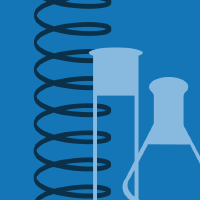Topic Menu
► Topic MenuTopic Editors


New Trends on Separation and Extraction of Bioactive Compounds and Respective Applications
Topic Information
Dear Colleagues,
Bioactive compounds are a group of components present in small amounts in plants and foods (such as fruits, vegetables, nuts, or oils) and induce activities in the human body that can promote health benefits. These bioactive compounds can be extracted from plants or other biomass products. Essential oils are a large group of bioactive compounds synthesized by plants with different applications. The bioactivity of essential oils can change depending on their origin and composition. Due to their properties, bioactive compounds are commonly used to functionalize and manufacture several products, such as pharmaceutic, cosmetics, and agriculture or food. Currently, conventional methods (e.g., hydrodistillation or using organic solvents) are used to perform the extraction of these bioactive compounds. However, hydrodistillation needs high times and temperature, which can promote chemical changes and negatively impact thermosensitive compounds. Soxhlet extraction uses toxic solvents and has long extraction times, causing thermal degradation of the extract. Thus, there is an increasing interest in nonconventional methods for extracting natural ingredients, such as supercritical fluid extraction, microwave hydrodiffusion and gravity, or using ionic liquids, which intend to increase the selectivity and preserve the substances of interest. The biovalorization of natural products using green extraction methodologies obtained from biomass can have a positive impact on health and the environment, and numerous applications are currently being studied and reported. In this context, this Topic, entitled “New Trends on Separation and Extraction of Bioactive Compounds and Respective Applications", intends to collect studies and technologies on the extraction and refining of bioactive compounds using green and sustainable methodologies, as well as on novel applications of these compounds. We look forward to receiving your work.
Dr. Isabel Maria Duque Martins
Dr. Madalena M. Dias
Topic Editors
Keywords
- bioactive compounds
- essential oils
- bio-waste
- extraction
- supercritical fluid extraction using carbon dioxide
- high-added value products
Participating Journals
| Journal Name | Impact Factor | CiteScore | Launched Year | First Decision (median) | APC | |
|---|---|---|---|---|---|---|

Analytica
|
- | - | 2020 | 15.6 Days | CHF 1000 | Submit |

Foods
|
5.2 | 5.8 | 2012 | 13.1 Days | CHF 2900 | Submit |

Molecules
|
4.6 | 6.7 | 1996 | 14.6 Days | CHF 2700 | Submit |

Processes
|
3.5 | 4.7 | 2013 | 13.7 Days | CHF 2400 | Submit |

Separations
|
2.6 | 2.5 | 2014 | 13.6 Days | CHF 2600 | Submit |

MDPI Topics is cooperating with Preprints.org and has built a direct connection between MDPI journals and Preprints.org. Authors are encouraged to enjoy the benefits by posting a preprint at Preprints.org prior to publication:
- Immediately share your ideas ahead of publication and establish your research priority;
- Protect your idea from being stolen with this time-stamped preprint article;
- Enhance the exposure and impact of your research;
- Receive feedback from your peers in advance;
- Have it indexed in Web of Science (Preprint Citation Index), Google Scholar, Crossref, SHARE, PrePubMed, Scilit and Europe PMC.

